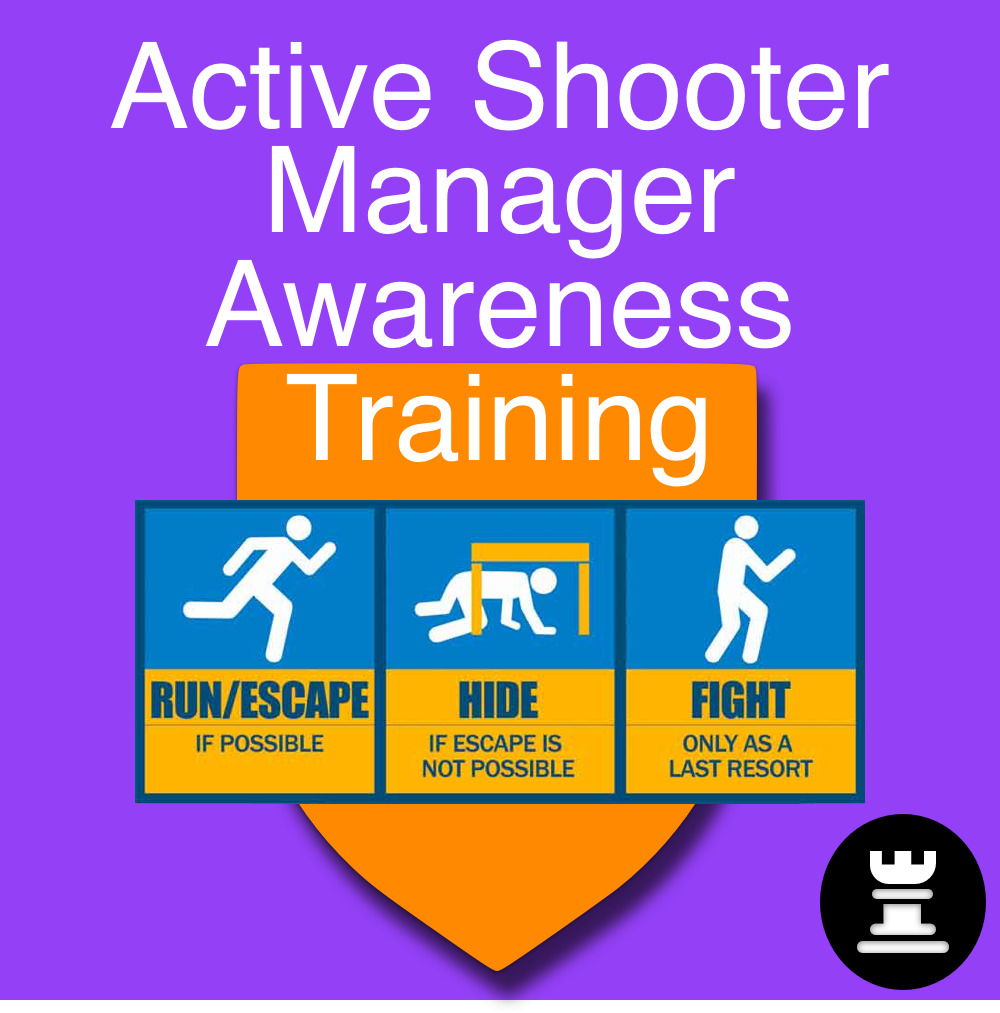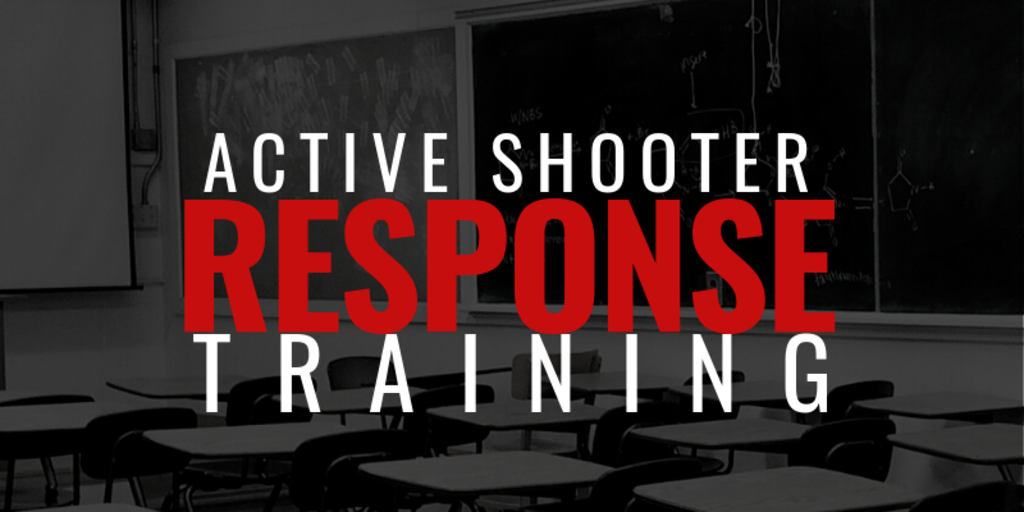How Active Shooter Training Improves Emergency Situation Response Readiness
How Active Shooter Training Improves Emergency Situation Response Readiness
Blog Article
The Vital Function of Active Shooter Training in Enhancing Emergency Situation Feedback Techniques in Numerous Settings
Energetic shooter training has actually emerged as a basic part in refining emergency situation reaction approaches throughout diverse settings, from universities to business settings. By outfitting people with customized knowledge and abilities, these programs not just prepare participants for potential situations yet likewise promote a culture of awareness and cooperation. The efficiency of such training hinges on different factors, consisting of the particular context in which it is implemented and the recurring commitment to enhancement. Exploring these measurements reveals critical insights that can significantly affect readiness and action end results despite worrying dangers.
Relevance of Active Shooter Training
In an era marked by boosting problems over public safety, the significance of active shooter training can not be overemphasized. As incidents of gun violence in public areas proceed to climb, companies throughout various sectorsâEUR" universities, offices, and public venuesâEUR" are identifying the need of preparing their employees and areas for such emergency situations. Active shooter training gears up people with crucial skills and understanding to respond efficiently in serious scenarios, possibly decreasing casualties and conserving lives.
The training not just concentrates on instant action actions, such as emptying and safeguarding in position, but also fosters a society of recognition and readiness. By taking part in reasonable simulations and discussions, participants can recognize potential susceptabilities within their setting and establish techniques for mitigating risks. Such training improves communication and control among group participants and very first responders, ensuring an extra unified approach throughout dilemmas.

Secret Components of Effective Training
Reliable energetic shooter training makes up several essential parts that improve readiness and response abilities. First and leading, reasonable scenario-based simulations are critical. These workouts immerse individuals in high-stress scenarios that imitate prospective energetic shooter occasions, allowing them to practice decision-making and physical actions under pressure.
Furthermore, training needs to consist of a detailed understanding of interaction protocols. Participants ought to be fluent in just how to communicate essential information to legislation enforcement and fellow people during an event. This consists of making use of emergency situation notifies and comprehending the hierarchy.
An additional essential component is the incorporation of psychological health awareness. Training should attend to the emotional influence of energetic shooter scenarios, outfitting individuals with dealing methods and sources to sustain their psychological wellness post-incident.
Moreover, routine correspondence course are important to ensure that skills continue to be sharp and expertise is current. This continual education and learning strengthens the significance of preparedness and cultivates a society of security within organizations.
Training for Different Environments
Active shooter training have to be customized to helpful site the certain atmospheres in which individuals run, as each setting presents distinct difficulties and dynamics. As an example, training in a business office will differ significantly from that in a school, shopping center, or medical care center. Each environment necessitates a tailored technique that thinks about variables such as design, population thickness, and available escape courses.
In universities, training programs must emphasize lockdown treatments, communication procedures with law enforcement, and strategies for protecting trainees. Conversely, in business setups, training may concentrate on emptying approaches, acknowledging dubious habits, and making use of offered sources for self-defense or shelter-in-place situations.
Moreover, public locations like malls or showing off occasions need substantial crowd administration methods, with a focus on fast action sychronisation amongst safety and security employees and local legislation enforcement.
In medical care environments, training should deal with specific vulnerabilities, such as the visibility of patients who might require immediate support. By comprehending the distinct features of each atmosphere, companies can develop effective training components that improve preparedness and enhance total safety and security, guaranteeing that individuals are furnished to react appropriately in different dilemma circumstances.

Structure a Society of Recognition
Developing Check This Out a society of awareness is fundamental to improving precaution in any type of atmosphere, as it empowers people to acknowledge potential dangers and react proactively. This culture necessitates continuous education and learning, open communication, and the integration of safety and security procedures into everyday routines.
Organizations must focus on active shooter training as component of their overarching security strategy, making certain that all personnel recognize the particular threats related to their setting. Regular training sessions grow vigilance and experience with emergency situation procedures, urging individuals to stay sharp to unusual habits or circumstances.
Additionally, cultivating a culture of understanding involves producing an environment where reporting dubious activity is both encouraged and normalized. active shooter training. Staff members must really feel comfy sharing their concerns without concern of retaliation. This can be attained via clear channels of communication and helpful management
Additionally, participating in neighborhood collaborations can heighten awareness past organizational borders, promoting a common obligation for safety. Initiatives such as workshops, drills, and informational sessions can even more enhance cumulative alertness. Ultimately, developing a society of recognition not just prepares people for potential situations yet also reinforces the general durability of the company against risks.
Reviewing Educating Performance
While normal training sessions are essential for preparedness, assessing their effectiveness is equally essential to guarantee that personnel are equipped with the necessary abilities and expertise to react properly in the event of an active shooter situation. Assessment processes should consist of both qualitative and measurable evaluations to measure the impact of training on feedback capacities.
Studies and feedback from participants can give useful insights into the training's importance and applicability. Furthermore, carrying out useful drills and simulations permits companies to observe real-time decision-making and synergy website link under stress. Assessing the results of these exercises aids determine strengths and locations for enhancement.

Entailing stakeholders, consisting of law enforcement and emergency -responders, in the analysis process can improve credibility and offer a thorough point of view on training efficiency (active shooter training). Inevitably, a systematic analysis method guarantees that energetic shooter training continues to be a vital component of a company's emergency situation response approach, fostering a safer environment for all
Conclusion
Active shooter training is essential in fortifying emergency situation action techniques across varied atmospheres. Ultimately, the implementation and analysis of reliable training programs add considerably to mitigating the effect of active shooter scenarios, consequently protecting lives and enhancing area strength.
Report this page